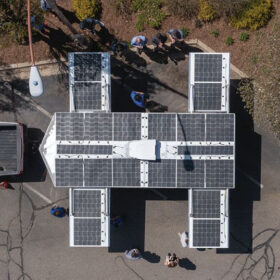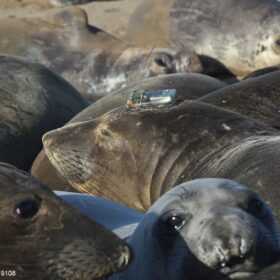The Hydrogen Stream: Japan expands ties with Germany, South Africa
The Japan Organization for Metals and Energy Security (Jogmec) and Germany’s H2Global Foundation have agreed to cooperate on clean hydrogen, while officials from Japan and South Africa met this week to discuss hydrogen collaboration opportunities.
The Hydrogen Stream: Zaha Hadid designs marina refueling stations
Zaha Hadid Architects has unveiled the world’s first green hydrogen refueling network for recreational boats at marinas in Italy, while a German-Czech consortium has announced the development of a drivable hydrogen motorcycle.
The Hydrogen Stream: H2 Green Steel gets $7 billion for production in Sweden
H2 Green Steel has secured funds to produce green steel in Sweden, while ZeroAvia has locked down support to develop a mobile liquid hydrogen (LH2) refueling truck for heavy-duty applications.
Weekend Read: Decarbonizing disaster response
Diesel generators have been the workhorse of disaster relief for decades but as the frequency of extreme weather events rises, so do calls to decarbonize the emergency response. Sustainability may not be the only benefit to using solar in a crisis, as pv magazine discovers.
The effect of PV plants on albedo, vegetation, land temperature
Scientists have used remote sensing to analyze the effect solar farms have across 116 sites worldwide. They found that the cooling effect is higher during the daytime, with albedo decreasing by 0.016 for most facilities.
Researchers apply thresholding to PV soiling image analysis
Thresholding methods have commonly been used to characterize the soiling accumulated on glass coupons. Researchers led by the Sapienza University of Rome have identified 16 automatic thresholding methods that may be used for analyzing soiling on PV panels.
California rooftop PV companies face high risks, says insurer
Solar Insure tells pv magazine USA that the financial stability of rooftop solar companies in California is now in question. Despite this, a state appeals court recently reaffirmed a number of anti-solar decisions.
Passive solar module cooling tech based on PCM, heat sink fins, water
A global research group has designed a novel PV module cooling system based on multiple cooling sources. The proposed system was able to reduce a PV system temperature by up to 16.7 C and increase power output by over 9%.
California deals blow to rooftop solar
The California Public Utilities Commission (CPUC) has prohibited the use of battery-tied solar exports to offset delivery charges, following its decision to slash the value of standalone solar exports in order to encourage the pairing of systems with battery storage.
Photovoltaics for marine wildlife telemetry devices
A US research team has tested mini solar modules in marine data collection devices, using animal hosts for water column profile measurements. The findings suggest that submarine PV can effectively operate in these applications at depths of up to 22 meters.










